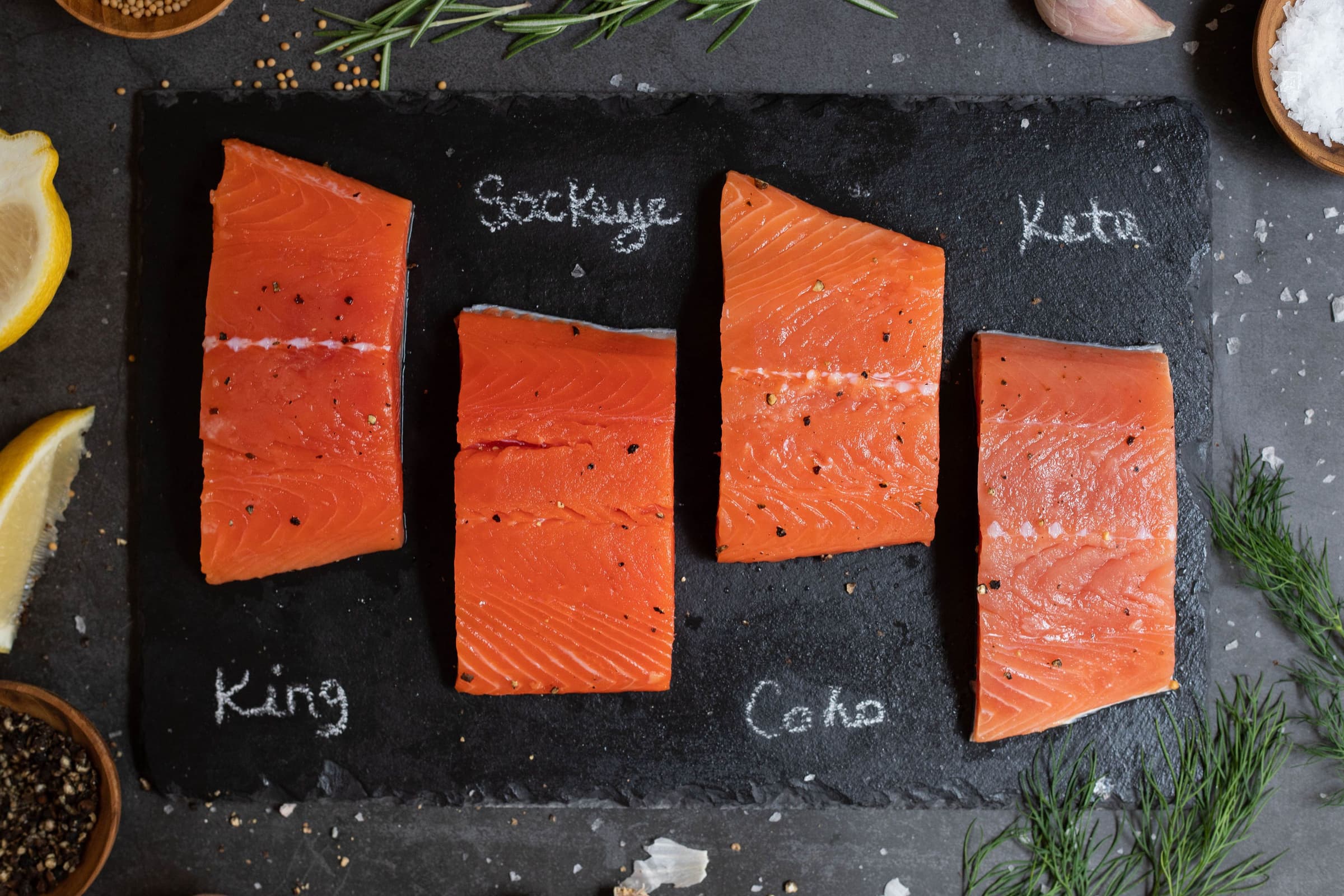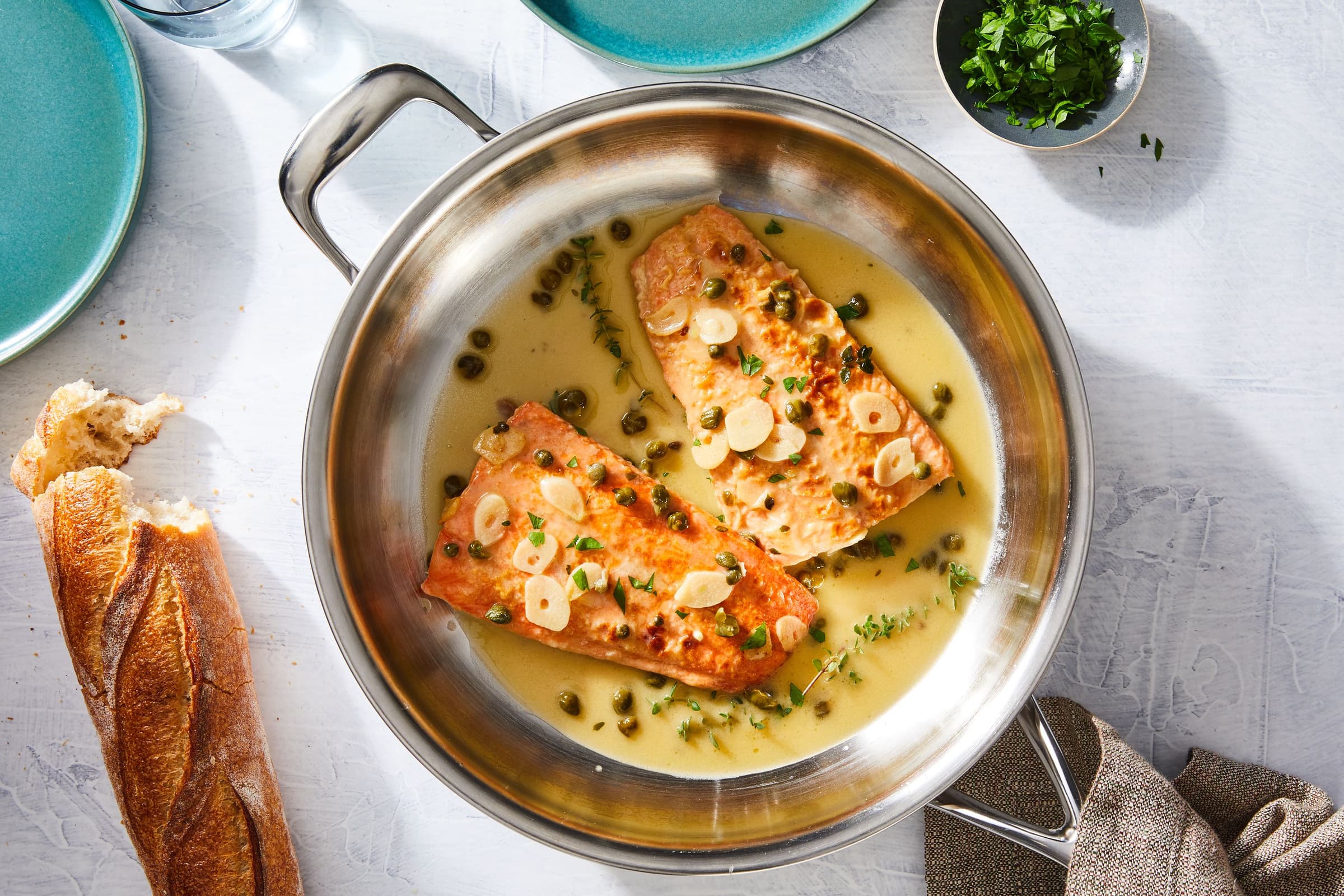As Sitka Seafood Market members, in all likelihood, you have a deeper knowledge of the varieties of salmon than I did when I first came on board as culinary director. In spite of years and years of professional cooking, food writing, and recipe development — which included lots of seafood recipes — my experience with salmon was pretty basic and limited to a single species.
King salmon — also called chinook — was essentially the only species I worked with. I was somewhat aware of some of the types of salmon, but only ever cooked with king and so, like Vaseline™ or Kleenex™, it came to represent the entirety of salmon-hood. I remember seeing coho and sockeye on menus and being intrigued, but with king as the platonic ideal of salmon — rich, fatty, and decadent — those other two didn’t really register. Nevermind keta, which was completely foreign to me until we fast forward to October 2020 when my salmon schooling began.
My first lesson was that the luscious king salmon on my plate was farm-raised — as wild Atlantic salmon fisheries collapsed mid 20th century — meaning it was loaded with antibiotics, and excessively fatty because it was living in the equivalent of a swimming pool, barely getting any exercise. Not so appetizing, is it? The side-by-side comparison between farmed with wild-caught king salmon was an eye opener. What I thought was buttery and full of flavor, just tasted greasy and bland next to leaner, cleaner wild king, which are leaner because they swim vast distances during their lifetimes and have a varied oceanic diet. The texture of wild king salmon was still rich and luscious, but it was the flavor that really blew me away – deep, briny, and buttery – the true expression of salmon-ness.
Next on the lesson plan was sockeye — thin fillets of deep red color, a bit less fatty than king, and robustly flavored. My first few attempts at cooking it yielded less than stellar results. Thinking I could cook it the same way as farmed king, I seared it over high heat, and kept it in the pan for far too long in order to get some browning. Those poor little filets with lower fat content didn’t stand a chance. They were super dry and had a pronounced fishy flavor which comes from overcooking. I’ve since found that cooking it, skin side down, until it’s about 75% done before flipping and just kissing the other side with the heat is nearly foolproof. Of course sous vide (vacuum-sealed and gently simmered) is 100% foolproof, providing your temperature and time are accurate.

Because coho more closely resembles king in color, size, and thickness, I initially treated it like king, but it has about half as much fat, meaning it was — no surprise — overcooked, dry, and fishy. Thicker fillets lend themselves to searing over higher heat to get crispy skin or that much-coveted Maillard reaction (browning of proteins) but need to come off the heat at about 125° internal temperature to maintain moisture, silky texture, and delicate flavor.
Keta, being the leanest of all — with less than half the fat of king — suffered the most under my inexpert handling. No amount of creamy sauce could rehydrate the resulting piece of pink-gray cardboard on my plate. I discovered, eventually, that mild-flavored keta was a versatile fish and a great alternative to any firm-fleshed white fish like cod or rockfish in soups, stews, and crispy nuggets.
I think the pattern has been well established by now. I initially failed to recognize and respect the individual characteristics of each species. The good thing is that with practice and time, these amazing fish schooled me.
For a deeper look at how the species differ and how best to prepare each one to perfection, read here. To learn more about wild vs farmed salmon, read here. And if you want a crash course on wild salmon read here.
Wishing you all a plate full of delicious salmon-y goodness!


